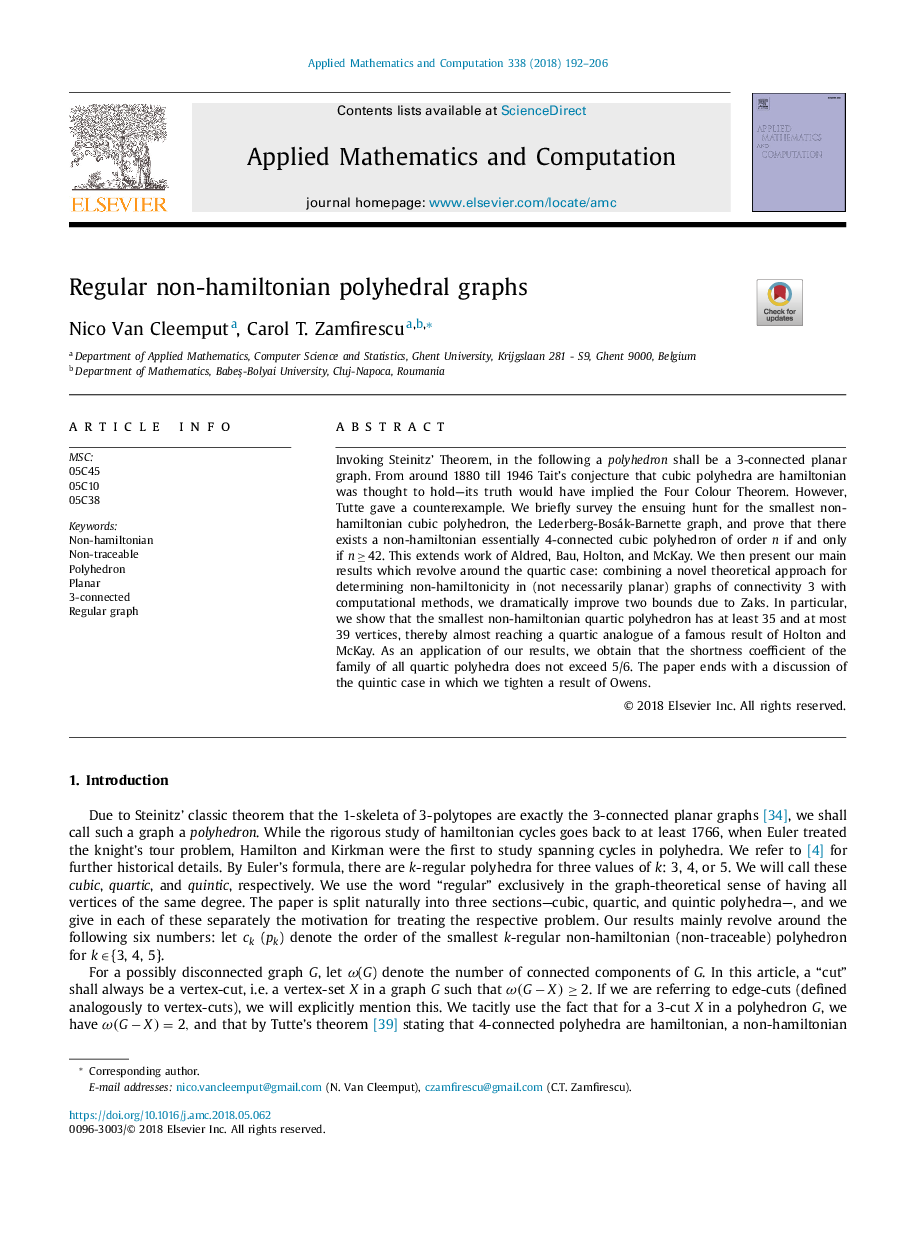| Article ID | Journal | Published Year | Pages | File Type |
|---|---|---|---|---|
| 8900603 | Applied Mathematics and Computation | 2018 | 15 Pages |
Abstract
Invoking Steinitz' Theorem, in the following a polyhedron shall be a 3-connected planar graph. From around 1880 till 1946 Tait's conjecture that cubic polyhedra are hamiltonian was thought to hold-its truth would have implied the Four Colour Theorem. However, Tutte gave a counterexample. We briefly survey the ensuing hunt for the smallest non-hamiltonian cubic polyhedron, the Lederberg-Bosák-Barnette graph, and prove that there exists a non-hamiltonian essentially 4-connected cubic polyhedron of order n if and only if nâ¯â¥â¯42. This extends work of Aldred, Bau, Holton, and McKay. We then present our main results which revolve around the quartic case: combining a novel theoretical approach for determining non-hamiltonicity in (not necessarily planar) graphs of connectivity 3 with computational methods, we dramatically improve two bounds due to Zaks. In particular, we show that the smallest non-hamiltonian quartic polyhedron has at least 35 and at most 39 vertices, thereby almost reaching a quartic analogue of a famous result of Holton and McKay. As an application of our results, we obtain that the shortness coefficient of the family of all quartic polyhedra does not exceed 5/6. The paper ends with a discussion of the quintic case in which we tighten a result of Owens.
Related Topics
Physical Sciences and Engineering
Mathematics
Applied Mathematics
Authors
Nico Van Cleemput, Carol T. Zamfirescu,
